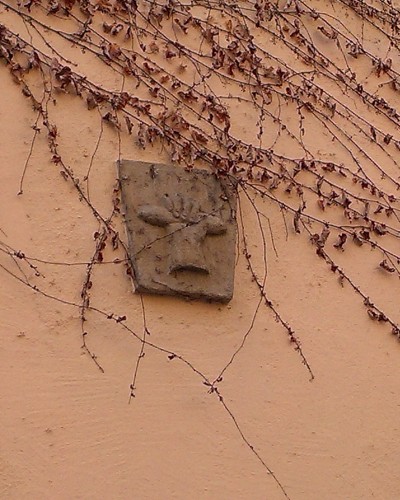Today on Monday Mysteries we discover the story behind a plaque here in Tübingen that I always referred to as “the hand with the stick.”
There is a plaque on a building next to one of the city hall buildings in town that is clearly an old plaque, even though it seems stuck onto the side of a modern building. This is just down the street from where we live, so I see this plaque frequently:
I’ve always thought of it as “the hand with the stick”, but wondered why there would be a plaque with a hand with a stick in its fist. The ends of the “stick” seemed rounded, and the stick didn’t seem long enough to be that useful as a stick for fighting, or anything like that. So every time I saw it, I wondered, why has a clearly old plaque with a hand grasping a stick been preserved?
According to the secrets of Tübingen book, the answer is that the “stick” isn’t a stick at all. It’s actually an elongated bread roll, called a Weckle here in Tübingen.
BTW, for all you linguistic types out there, the “-le” at the end of that word is a standard Schwabian diminutive ending, Tübingen being a town where the Schwabian dialect is spoken. The word in standard German for this type of long bread roll is Weck; a Weckle is therefore a “little long bread roll”.
Anyway, it turns out the hand on this plaque is holding a Weckle. This particular plaque went up in the 1500s on the side of a social services house for the poor that had first been established in Tübingen in the 1291. There were a variety of city services offer to the poor in this building over years.
Then, in the early 1500s, they added a new service: poor people who did not have enough money for food could come here on Wednesday and Saturdays to received free allocations of bread. The plaque was put up to indicate that this was the place to come for the bread handouts.
The poor house building from the middle-ages was on site of the building that has been remodeled and recently repainted that the orangey-pink color that you see in the photo. The city’s social services agency is still in the building, although I don’t believe they still give out bread twice-a-week these days. However, the plaque — with the hand holding the Weckle — and not a stick as I had always thought — has been preserved on the side of the remodeled building, marking Tübingen’s centuries-old commitment to providing services to help the poor.


Nice story, wonder if anyone ever wrote a book about the mysteries of Marlton, NJ.
Can’t think why, but maybe I better start looking around for old ornaments on buildings.:)
I liked your explanation of 16th century social services. It reminds me of our bus tour in Germany several years ago when we came upon an early version of subsidized housing that was very good.
Thanks!
@Mom: hmm, it may be harder to find old ornaments in Marlton, a town founded somewhat after the Middle ages. But keep an eye out and let me know. 😉
@Stan – interesting. Do you remember which town that was?